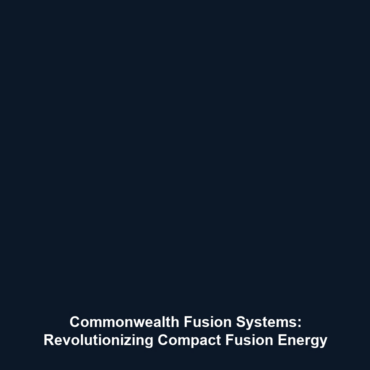Understanding Fusion Energy: Definition, Applications, and Future Innovations
Introduction
Fusion energy is the process of generating energy by fusing atomic nuclei, the same process that powers the sun and stars. This remarkable energy source holds the potential to transform the world’s energy landscape, offering a cleaner, more sustainable alternative to fossil fuels. As the global community seeks solutions to climate change, understanding fusion energy is crucial. This article delves into the definition of fusion energy, its significance, and how it fits within the larger category of Fusion Energy.
Key Concepts
At its core, fusion energy relies on the principle of nuclear fusion, where two light atomic nuclei combine to form a heavier nucleus, releasing a substantial amount of energy in the process. This section explores major concepts associated with fusion energy:
1. The Science Behind Fusion
Fusion occurs at extremely high temperatures and pressures, conditions that allow atomic nuclei to overcome their natural repulsion. In stars, such as our Sun, these conditions are naturally present, creating a continuous process of energy generation through fusion.
2. Fusion vs. Fission
Unlike nuclear fission, where heavy atomic nuclei split (releasing energy), fusion is considered a safer and cleaner energy source. Fission has been associated with hazardous waste and nuclear accidents, highlighting fusion energy’s potential advantages for sustainable energy production.
Applications and Real-World Uses
The applications of fusion energy are expansive and promising. Here are some significant real-world uses:
- Power Generation: Fusion power plants could provide a nearly limitless source of energy with minimal environmental impact.
- Space Exploration: Fusion propulsion systems could enable faster space travel, reducing the time for missions to distant planets.
- Small-Scale Energy Production: Development of compact fusion reactors for local energy needs, improving energy security.
Understanding how fusion energy is used in practical applications will be crucial as the global demand for clean energy continues to rise.
Current Challenges
Despite its promise, several challenges hinder the advancement and implementation of fusion energy:
- Technological Challenges: Achieving and maintaining the extreme conditions necessary for fusion is a significant technical hurdle.
- Cost: Fusion research requires vast investment, with current prototypes demanding substantial financial support.
- Long Development Timeframes: Fusion technology may remain in the testing phase for decades, delaying widespread adoption.
Addressing these challenges is crucial for the future of fusion energy within the broader scope of sustainable energy solutions.
Future Research and Innovations
Exciting research and innovations are emerging in the field of fusion energy:
- ITER Project: The International Thermonuclear Experimental Reactor is a major experiment designed to demonstrate the feasibility of fusion as a large-scale energy source.
- Advanced Materials: Development of new materials that can withstand the extreme conditions inside a fusion reactor is crucial for progress.
- Private Sector Contributions: Companies like Helion and TAE Technologies are pioneering innovative approaches to achieving commercial fusion energy.
These advancements may significantly influence the future trajectory of fusion energy and its role in combating climate change.
Conclusion
Fusion energy, defined as the process of generating energy by fusing atomic nuclei, presents a viable solution to the world’s pressing energy challenges. It offers significant advantages over traditional energy sources, including reduced waste and the potential for abundant energy generation. As research continues to evolve, addressing current challenges will be essential for realizing the full benefits of fusion energy. For more insights, explore our articles on sustainable energy initiatives and the cutting-edge research driving the future of energy solutions.









